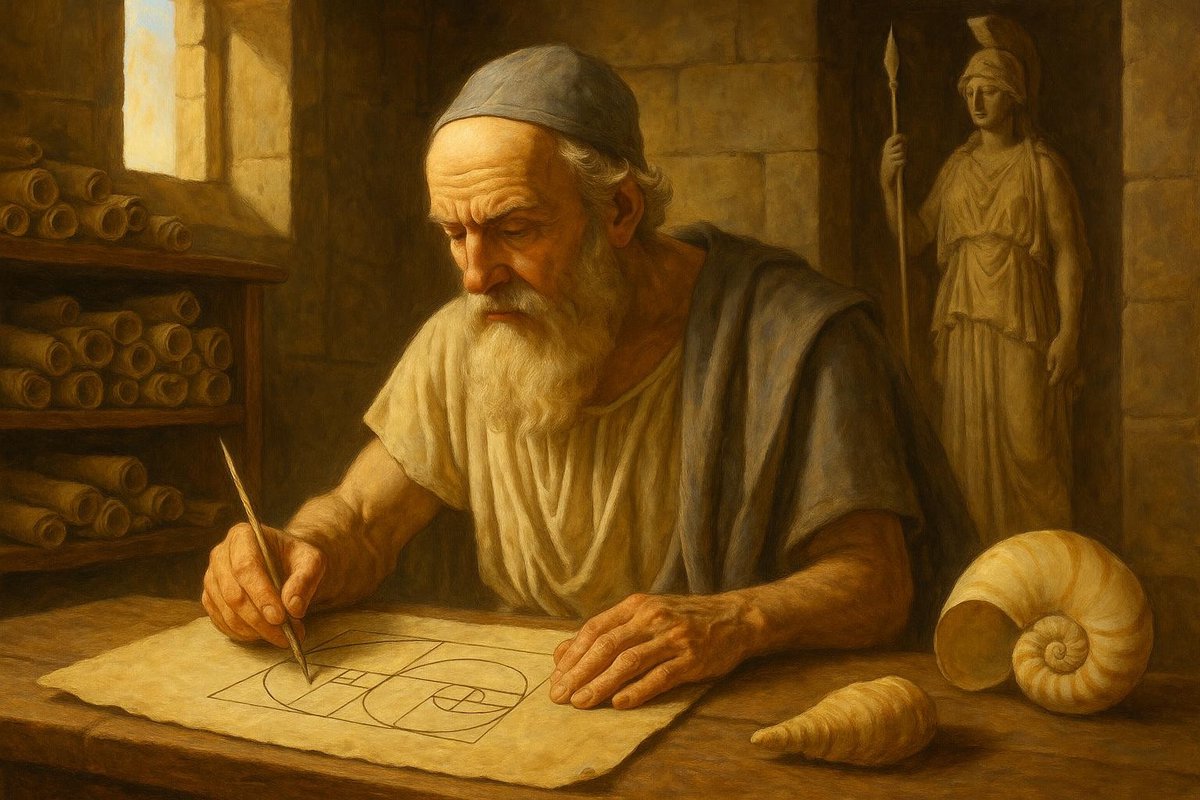
Imagine a number so mysteriously beautiful that it has captured the imagination of mathematicians, artists, and architects for centuries. This isn’t just any number—it’s the Golden Ratio, often denoted by the Greek letter phi (φ). Interestingly, this mathematical gem has roots that stretch back to Ancient Greece, inspiring countless intellectual journeys.
The Ancient Puzzle: Where It All Began
To trace the beginnings of the Golden Ratio, we must travel back to the time of the Greek mathematicians who were quite the puzzle enthusiasts. They were not merely interested in numbers, but in how these numbers could elegantly describe the world around them.
- The concept is believed to have been first studied by the mathematician Euclid in his monumental work, “Elements.”
- Euclid explored the idea of dividing a line into two parts such that the whole length divided by the long part is equal to the long part divided by the short part.
This curious proportion became the intellectual puzzle that spiraled into what we now admire as the Golden Ratio. No wonder it fascinated these early thinkers—it was a bridge between arithmetic and geometry.
Fibonacci’s Unexpected Contribution
As time goes on, the allure of the Golden Ratio only grows stronger. Enter Leonardo of Pisa, better known as Fibonacci, who introduced the famous sequence that bears his name.
- The Fibonacci sequence is a series of numbers where each number is the sum of the two preceding ones, often starting with 0 and 1.
- When you take the ratio of successive Fibonacci numbers, you’ll notice it approaches the Golden Ratio.
Of course, Fibonacci himself may not have been aware of this connection, but his work laid the groundwork for future mathematicians to discover the enchanting link between these numbers and phi.
Golden Ratio in Nature and Art
Many people believe that the Golden Ratio is nature’s secret formula for beauty. Whether or not this is entirely true, it’s undeniable that this ratio appears in countless natural forms.
- From the spirals of galaxies to the arrangement of leaves, the Golden Ratio seems to be nature’s favorite blueprint.
- Artists and architects have also been enamored with phi, employing it in their works to achieve a sense of balance and harmony.
Take the Parthenon in Athens, for example. Its design reflects the principles of the Golden Ratio, creating an aesthetically pleasing structure that has stood the test of time.
A Mathematical Tool for Modern Times
Today, the Golden Ratio is more than an ancient curiosity—it’s a tool that continues to inspire and guide modern design and technology.
- In graphic design, the ratio is used to create visually appealing layouts and interfaces that feel right to the eye.
- Architects still use it to ensure their structures resonate with an innate sense of order and beauty.
The Golden Ratio reminds us that mathematics isn’t just about numbers; it’s a language that describes the world’s inherent elegance and order. No wonder it has never lost its charm.
In conclusion, the Golden Ratio is more than just a number; it is a testament to the timeless beauty and interconnectedness of mathematics and the world around us. From its ancient origins to its modern applications, phi continues to fascinate and inspire.
Fuel Someone Else’s Curiosity
If this exploration of the Golden Ratio has sparked your interest, why not share it with others? Spread the wonder of mathematics and let someone else marvel at the elegance of this timeless ratio. After all, curiosity is contagious!

Leave a Reply